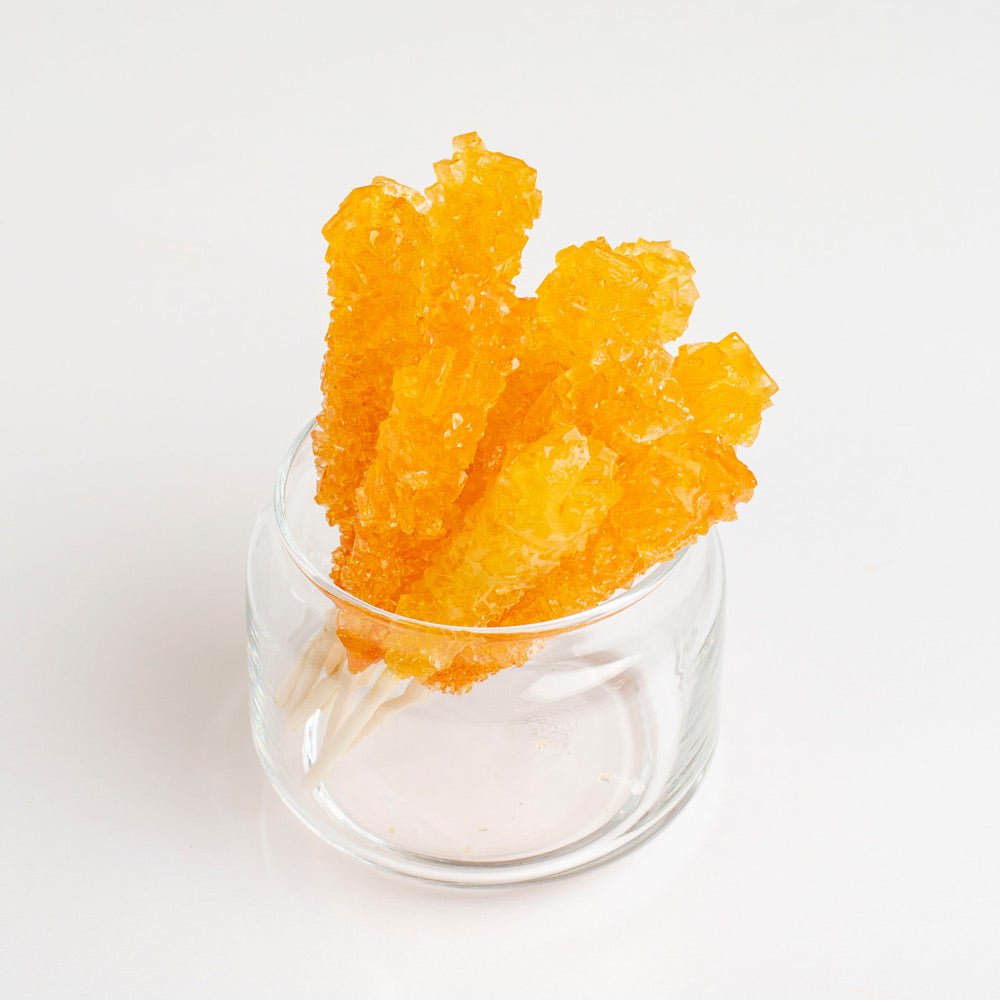Rock candy is not just a basic sweet with glittering crystals. It's a candy with a rich past that reaches back more than a thousand years, brushing against ancient cultures, international trade routes, and royal courts in the process.
Ancient Origins: Medicine and Sweetness
The history of rock candy begins in ancient India and Persia, where sugarcane was cultivated in such large amounts and sugar was an expensive luxury. Confectioners discovered that if a sugar solution was cooled slowly, it would form crystals. These natural crystals were the first rock candies.
It was eaten in India, where it was named mishri, not just as a sweet but also as medicine under the system of Ayurveda. It was believed to soothe sore throats, calm indigestion, and provide strength. Similarly, rock candy, termed nabat in Persia, was both cherished as a sweetener and as medicine and was typically dissolved in herbal- or saffron-infused teas.
Rock Candy Travels the Silk Road
As sugar cultivation increased, rock candy was a valuable item marketed on the ancient Silk Road. It was carried to China, the Middle East, and eventually to Europe. Rock candy was not heavy and did not spoil, so it was a perfect commodity for long-distance trade.
In China, rock sugar was a common ingredient in food preparation and traditional medicine, valued for its clean, soft sweetness. In the Middle East, it was combined with flavours including saffron and rose water to enhance the beauty of tea and desserts.
A Luxury Symbol in Europe
By the Middle Ages, rock candy had arrived in Europe, where it was a luxury that only the wealthy could afford. Sugar itself was still uncommon or expensive, and crystallized sugar was even more prized for its beauty. Apothecaries prescribed it as a treatment for colds and gastrointestinal ailments, and served it too as a garnish at royal feasts and banquets.
As sugar extended farther afield in the 17th and 18th centuries, rock candy gradually lost its place on the apothecary shelf and migrated to the confectionery shop. It was reserved as an occasional treat, flavoured normally with mint or fruit essences, and linked to celebratory occasions.
From Medicine to Confection
Rock candy, in the course of time, developed from a medicinal ingredient to a sweet and beloved treat. It was perfumed in the majority of cultures with natural food sources:
-
Saffron and rose water in the Middle East
-
Herbal extracts and fruits in Asia
-
Spices and mint in Europe

Eupherbia's Rock Candy: Tradition Retained
At Eupherbia, we pay homage to the centuries-long tradition of rock candy by producing it with the same values of purity, simplicity, and tradition that first characterized it centuries ago.
-
Composed of premium, unrefined sugar
-
Slowly crystallized to preserve texture and clarity
-
Available in natural flavour and saffron-flavored forms
Our rock candy is more than a sweetener, it's a salute to an ancient tradition that has been enjoyed for centuries.



Share:
Why is Saffron the Most Expensive Spice in the World
How Can Blue Salt Help with Blood Pressure Regulating?